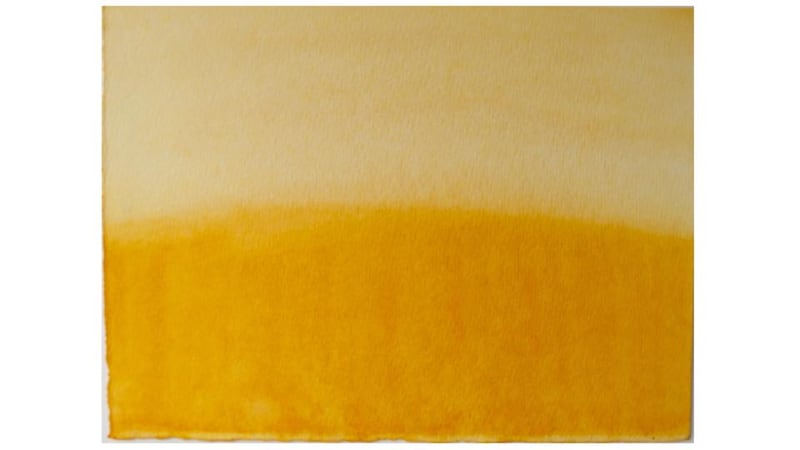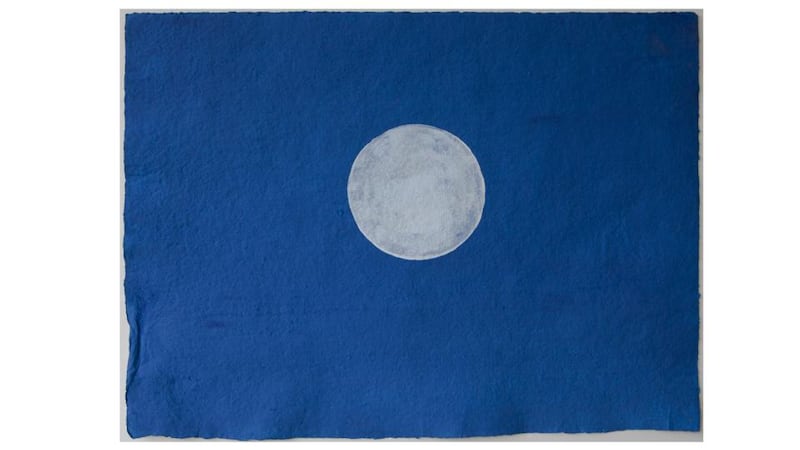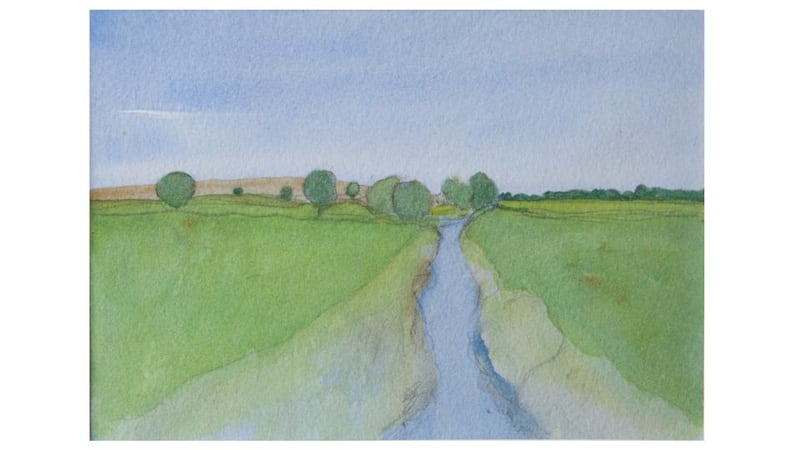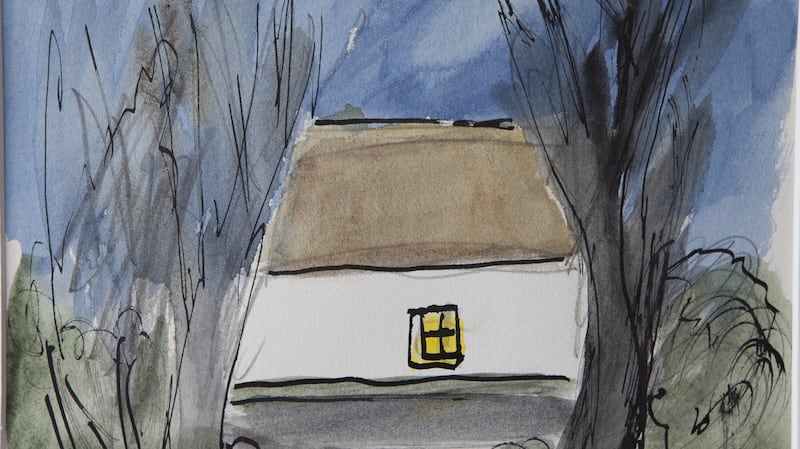Though both were born and brought up elsewhere, painter Seán McSweeney and poet Gerard Smyth have strong associations with a region of Co Meath, and both spent time there when they were young.
Smyth was born and raised in Dublin, but his mother came from Knightstown, close to the village of Wilkinstown. Summer stays at her family home became part of his annual routine as he was growing up. “I returned summer after summer. The place . . . became my childhood idyll and playground.”
Freedom of access to the rural environment, from thatched house and farmyard to the pastures and meadows beyond, an earthy Arcadia, afforded a refreshingly different experience to life in inner city Dublin.
If Smyth as a poet is most closely associated with Dublin, even a specific slice of Dublin, the Liberties, McSweeney is generally associated with rural Sligo, specifically the bogland and coastline of Ballyconnell, where he has lived and worked since 1984.
Prior to that, from the late 1960s, he was based in Co Wicklow. But he too was born in Dublin. His mother's roots were in Ballyconnell, and his father's in Co Meath, at Clongill.

Both men’s memories of Meath are coloured by loss. Each experienced the death of a parent at an early age. McSweeney’s father, a very capable painter himself, was killed prematurely in a tragic accident. Smyth’s mother was suddenly taken ill one summer in Meath and died within months.
Sadness, for both, does not eclipse fond memories and affection, and family links serve to strengthen their sense of connection to the place and its people. When Solstice director Belinda Quirke proposed that Smyth might develop work centred on his experience of Meath he quickly warmed to the idea.
When Quirk wondered if there was a visual artist with whom he might work in tandem, he immediately thought of McSweeney, widely regarded as the finest painter of the Irish landscape of his generation.

The two had known each other for many years. Smyth was aware of McSweeney’s Meath connections, but it struck him that he had never seen a painting of a Meath location by him. And he is an artist who is acutely sensitive to place. Witness the sweep and colour of his Ballyconnell work, reflecting the horizontality of the landscape with its broad bands of land, sea and sky, as distinct from the steep moodiness of his Wicklow paintings. McSweeney reacted positively to the suggestion that he might look to the Meath landscape.
Neither, though, knew how the process might develop. Gradually it emerged that they might jointly and individually explore their links with Meath. Each would develop a body of work, and the two bodies should be complementary.
The idea was that both would revisit the areas they knew, and they would meet and talk. “The whole project is about memory,” Smyth explains. “The countryside of memory.” In that regard, he was aware that Meath figured in a significant number of his existing poems in just that sense.
As many as 18 of the poems in The Fullness of Time, his volume of selected poems, are tied to the county. "I even wondered if I had written Meath out of my system," he said. "But I thought I would probably get a few more poems by spending time there again." It was, he pointed out, nearly 50 years since he had enjoyed summers there. In the event, he was inspired to write many more poems than the 10 or 12 that he had optimistically thought possible.
He was impressed that, wherever they were in Meath, people knew exactly who McSweeney was, and his easy, affable manner blended in effortlessly with the local tempo. Bit by bit, the modest group of watercolours he envisaged grew to a substantial body of works on paper. Poet and painter visited Meath separately, and they met up there; Smyth also visited McSweeney’s studio in Sligo. They discussed their recollections.
“We found that the places we remembered overlapped in various ways,” says Smyth. Clongill is, after all, “not much more than the proverbial stone’s throw” from his mother’s family home. McSweeney spoke of the character of the countryside as dominated by trees and bog. That struck a chord.
Huckleberry Finn
Trees have featured recurrently in Smyth's own poetry, and he thought of the Meath poet Francis Ledwidge. Writing home to a Wilkinstown resident, Lizzie Healy, in 1915, Ledwidge "asks her to 'remember me to the bog and all the trees around Wilkinstown'."
Trees play a prominent role in McSweeney’s watercolours, from those thickly massed along the railway line to the elegant rhythms of beech trunks and curving branches around Bective. Smyth writes of the loss of the elm trees due to Dutch elm disease, including the elm that shaded his grandmother’s house and had to be felled – “the songbirds travelled on”. He was touched when McSweeney chose to depict the family cottage where he’d spent his summers. In one painting McSweeney alludes to the death of the elm.

One day he mentioned the Yellow River, a local tributary of the Boyne. They were talking about childhood experiences of the landscape and The Adventures of Huckleberry Finn came up. The Mississippi River is central to the mythic sweep of Mark Twain's complex narrative. Perhaps the Yellow River, as emblematic of that sense of possibility, adventure and journeying characteristic of childhood, would provide an appropriate title? The Yellow River, Smyth writes:
“ . . . is the river of nostalgia
that along the way has shady places
never seen by any cartographer.
The whole distance of it
Is the distance back to where
A boy spent a days-of-boyhood summer
when it seemed as if time was just beginning.”
“When you enshrine a particularly idyllic childhood experience,” he observes, “it can become fixed in your mind. But of course it is selective and partial. How much of memory is imagination?”
His conversations with McSweeney were in part a means of quizzing memory. The painter’s tragically “disrupted childhood” in Clongill had, he felt, etched the place in his being. As they talked there was a sharing and confirmation of details, a sense of convergence and overlap, connections and coincidences.

Several of McSweeney's lyrical works have a wonderfully spare, pared-down, elemental character. They include the disc of the full moon against a soft blue expanse in Where's the Moon Tonight? (For James), the heat haze of Summer Field, the churned earth of Ploughed Field, the rainbow brilliance of August Field and the horizontal bands of land, sea and sky in Shoreline, a venture to the sea accompanying Smyth's poem Coast. In fact, while it wasn't necessarily the plan, several of McSweeney's paintings come across as direct responses to individual poems, as a pattern developed of Smyth sending completed poems to the painter.
There is a reflective, elegiac air to the project, yet for both poet and artist it became not so much a letting go as a process of rediscovery and reconnection. The exhibition incorporates paintings by McSweeney's father, and much documentary material on the making of the work, which included literally walking the land: something that ignites memory, Smyth feels, so that "a stretch of ground will suddenly come to life". That comes vividly across in their joint publication, designed by Oonagh Young, The Yellow River, a rich interweaving of word and image.
The Yellow River – A collaborative project in words and images, by Gerard Smyth and Séan McSweeney. Solstice Arts Centre, Railway Street, Navan, Co Meath Until March 23rd solsticeartscentre.ie











